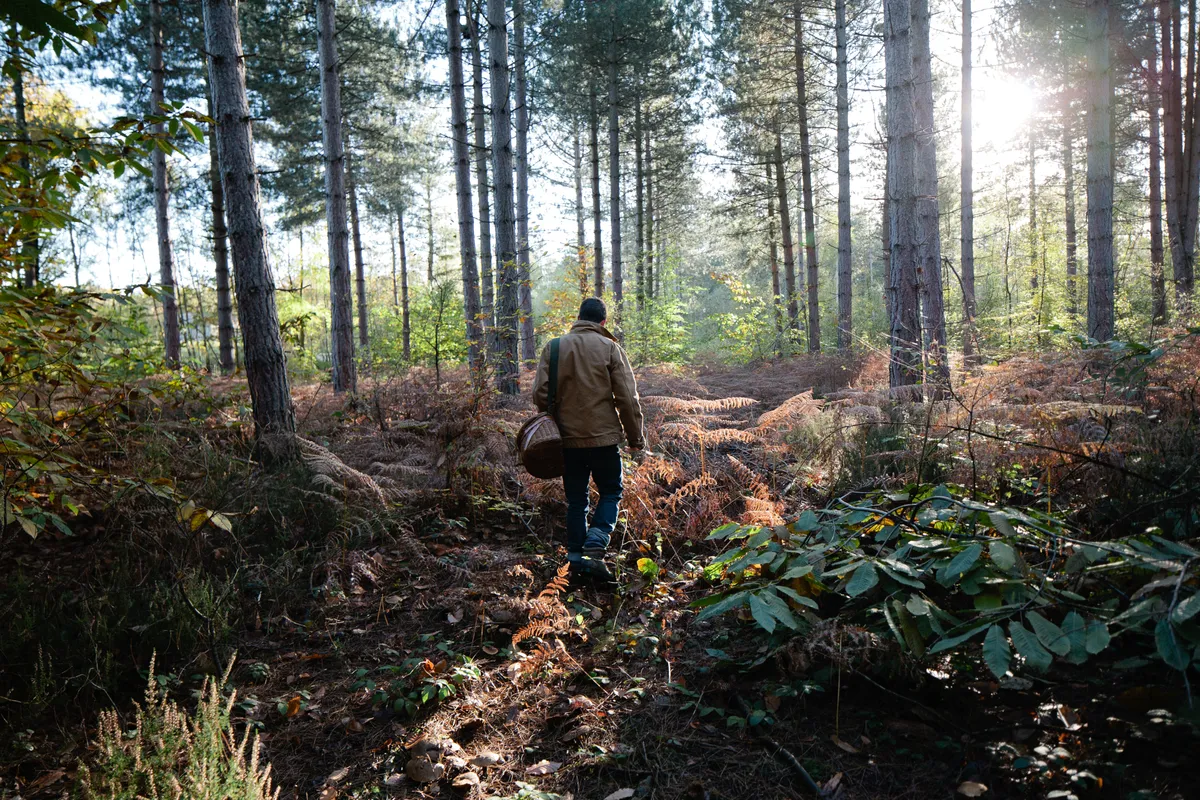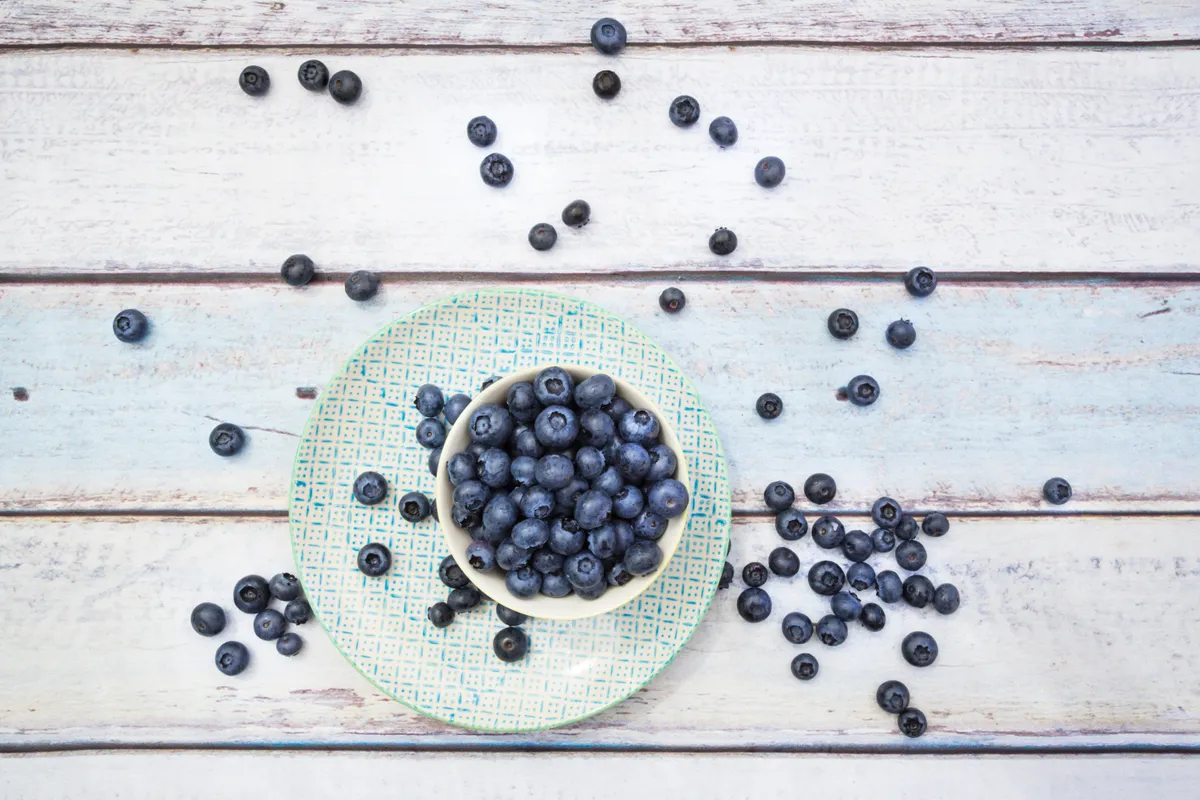There is a wide variety of food you can forage for in Britain, including nuts, seeds, fruits, vegetables and more. Foraging is a great way to appreciate seasonal change, connect with nature and find wild local ingredients to use in delicious home cooking recipes.
Woodlands, forests and the countryside are a good place to start your foray into foraging, but you may also find wild foods in surprisingly urban places too, such as a local park or even your garden.
Our expert monthly foraging guide explains how to forage safely, the law and what's in season each month.
What is foraging?
Foraging is the activity of finding, gathering and harvesting wild foods – for free. It's a great way to stay active and spend time outdoors connecting with nature and learn more about where your food comes from.

How to forage responsibly
Always be sure you can positively identify any plant before you pick it, and never eat any plant you are unsure of. When foraging, ensure you leave plenty for wildlife.
Here are a couple of key foraging guidelines:
- Seek permission before foraging. In certain areas, plant species will be protected so it is important to do some research and check with the landowner before you start gathering.
- Only pick from areas that have a plentiful supply. Look for areas where you can find food in abundance and then only collect a small amount for personal use. Never completely strip an area as this could damage the species and deny another forager the chance to collect.
- Leave enough for wildlife and avoid damaging habitats.Many animals rely on plants for survival, so never take more than you plan to eat as this could also deny wildlife from a valuable food source. Be mindful about wildlife habitats and avoid disturbing or damaging.
- Never pick protected species or cause permanent damage. Britain's wild plants are all protected under the Wildlife and Countryside Act (1981), which makes it illegal to dig up or remove a plant. Check the law before you forage or if in doubt, why not take part in a foraging class with an expert and learn the basics.
How to forage safely
Take a good field guide with you and always be sure you can positively identify any plant before you pick it. Never eat any plant you are unsure of. Taking part in a foraging course with an expert is a good way to learn how to forage safely and responsibly.

Monthly foraging calendar
1
January
Put on your woolly hat, zip up your coat and take a walk through the woodland to collect your first foraged finds of the year. While wild food isn't as abundant in January as other times of the year, you can still find plants such as chickweed, common sorrel, nettle and wild chervil.

January foraging guide
2
February

Heading into February, the countryside will still feel very wintery, however it's a good time to forage for early spring plants, such as alexanders, mushrooms, nettles, chickweed and wild garlic. Alexanders are one of the first edible plants of the foraging year and can commonly find it growing along rivers, watercourses and woodland edges.
February foraging guide
3
March

When you’re out stretching your legs across grassland in March, keep an eye out for clusters of green spears springing from the turf.
March foraging guide
4
April

Winter is finally over, and Spring has arrived with longer days, warmer sunshine and blossoming flowers. You can forage foods such as wild garlic, garlic mustard and cow parsley. Read our expert guide on what to look out for when foraging in April.
April foraging guide
5
May

Take advantage of the beaming sun, long weekends and delicious herbs such as lime, sorrel and chickweed. Read our expert guide on what to look out for when foraging in May.
May foraging guide
6
June

Britain’s forest and woodlands are rife in summer with herbs waiting to be foraged and used to add flavour to recipes. Look out for pineapple weed, honeysuckle and elderflower.
June foraging guide
7
July

Whilst walking through beautiful woodlands and along green hedgerows, keep an eye out for food you can take home such as bilberries and wild strawberries.
July foraging guide
8
August

With the transition from summer into autumn, August is a great month to go foraging for berries. Walk into woodland and you're bound to find elderberries and blackberries.
August foraging guide
Discover urban foraging in London with Rachel de Thample
The heart of London might seem like an unlikely place to forage for food, but writer Rachel de Thample is always finding tasty things to eat in the city.
9
September

Autumn is just around the corner, so make the most of the late summer bounty that can be found in Britain's woodlands and hedgerows. Just like August, there are plenty of berries that can be transformed into jams and jellies. Look out for hawthorn berries, rosehips and elderberries.
September foraging guide
10
October

Autumn sweeps through the British countryside with hues of orange, red and brown. Fresh food ripens and falls from trees, plants and bushes, especially hazelnuts, damsons and walnuts.
October foraging guide
11
November

November is one of the best months for foraging – with greens, flowers, nuts and fungi to be found on chilly walks. Take a brisk walk through the forest and forage for oyster mushrooms, chickweed, navelwort, winter chanterelles and more.
November foraging guide
12
December

Eager foragers should head to the coast in winter – it's one of the most fruitful times to find a fabulous feast, including mussels, cockles, marsh samphire and sea beet.
December foraging guide
Easy foraging recipe ideas
Sea beet with duck egg and new potatoes
Sea beet is similar to spinach, but its glossy, pointed leaves are fleshier and growing more flavoursome. It can be found growing on the edges of beaches, coast paths and other areas of coastal wasteland. It can be picked and cooked throughout the year.
The young leaf growth is actually great to eat raw in salads. This campfire brunch is quick and simple to prepare, particularly if you have some leftover cooked potatoes.

Easy nettle soup
They’ve given us some of the most agonising experiences of our young lives as nippers and they continue to upset our own children and grandchildren, but nettles are more than just needled irritants.
The Cornish make a delicious cheese using them, the Nepalese make curries and some people even use them for clothing.

They’ve given us some of the most agonising experiences of our young lives as nippers and they continue to upset our own children and grandchildren, but nettles are more than just needled irritants.
The Cornish make a delicious cheese using them, the Nepalese make curries and some people even use them for clothing.
Bilberry and Almond Streusel Cake
Bilberries look like small blueberries, and they are closely related, but their taste is much more intense and sharp. You will need to work hard to find them. Extremely difficult to grow and therefore rarely cultivated, bilberries are a real treat for a forager.
Rich and buttery, the bilberries add fantastic little bursts of sharpness to cut through the sweetness of the cake. If you are not planning a hill walk you could always substitute the bilberries for redcurrants or blackcurrants with great effect.

See more seasonal recipe ideas
